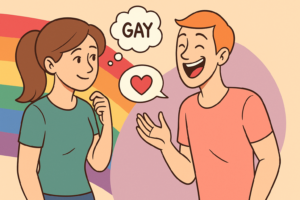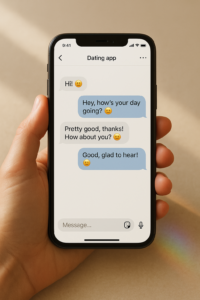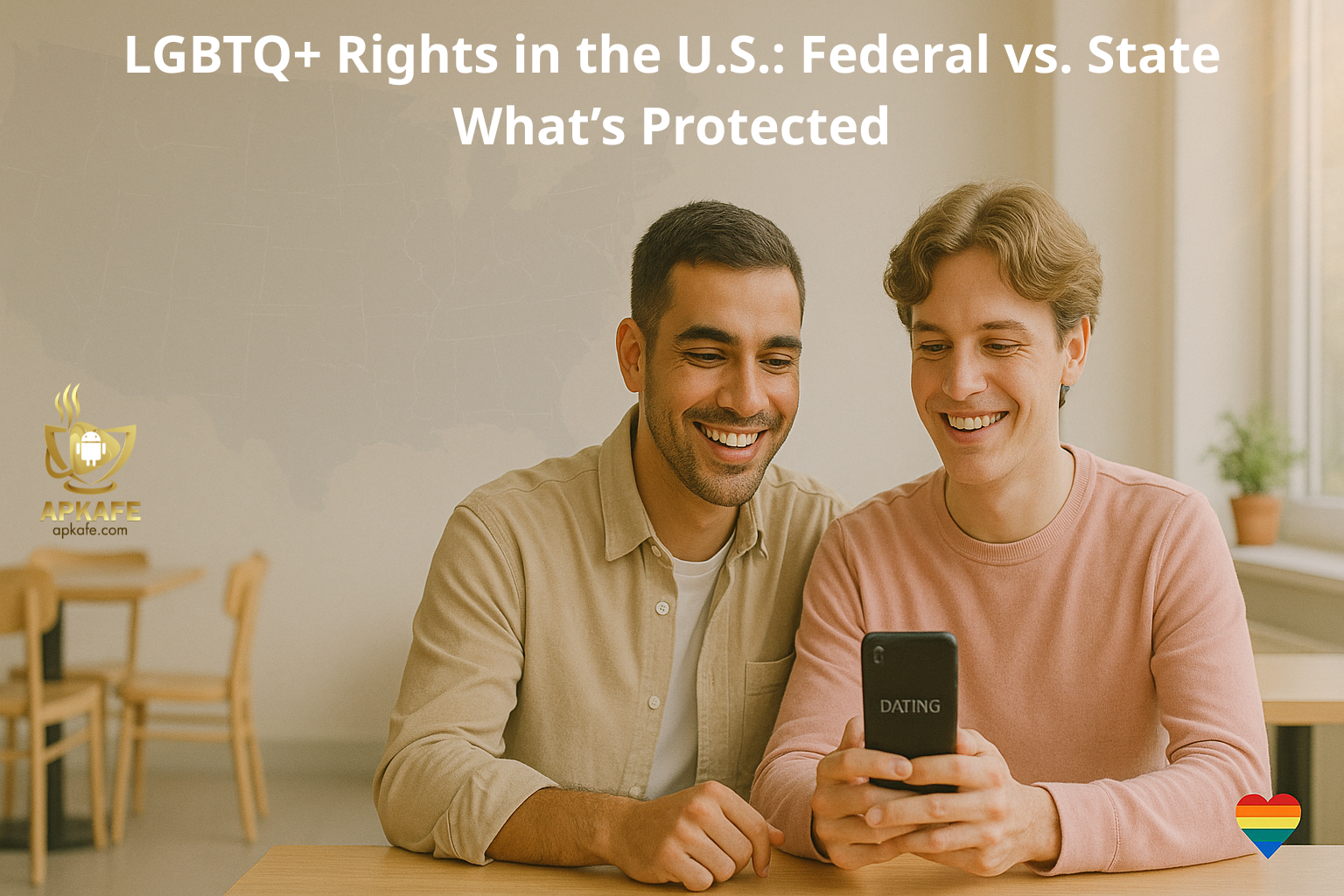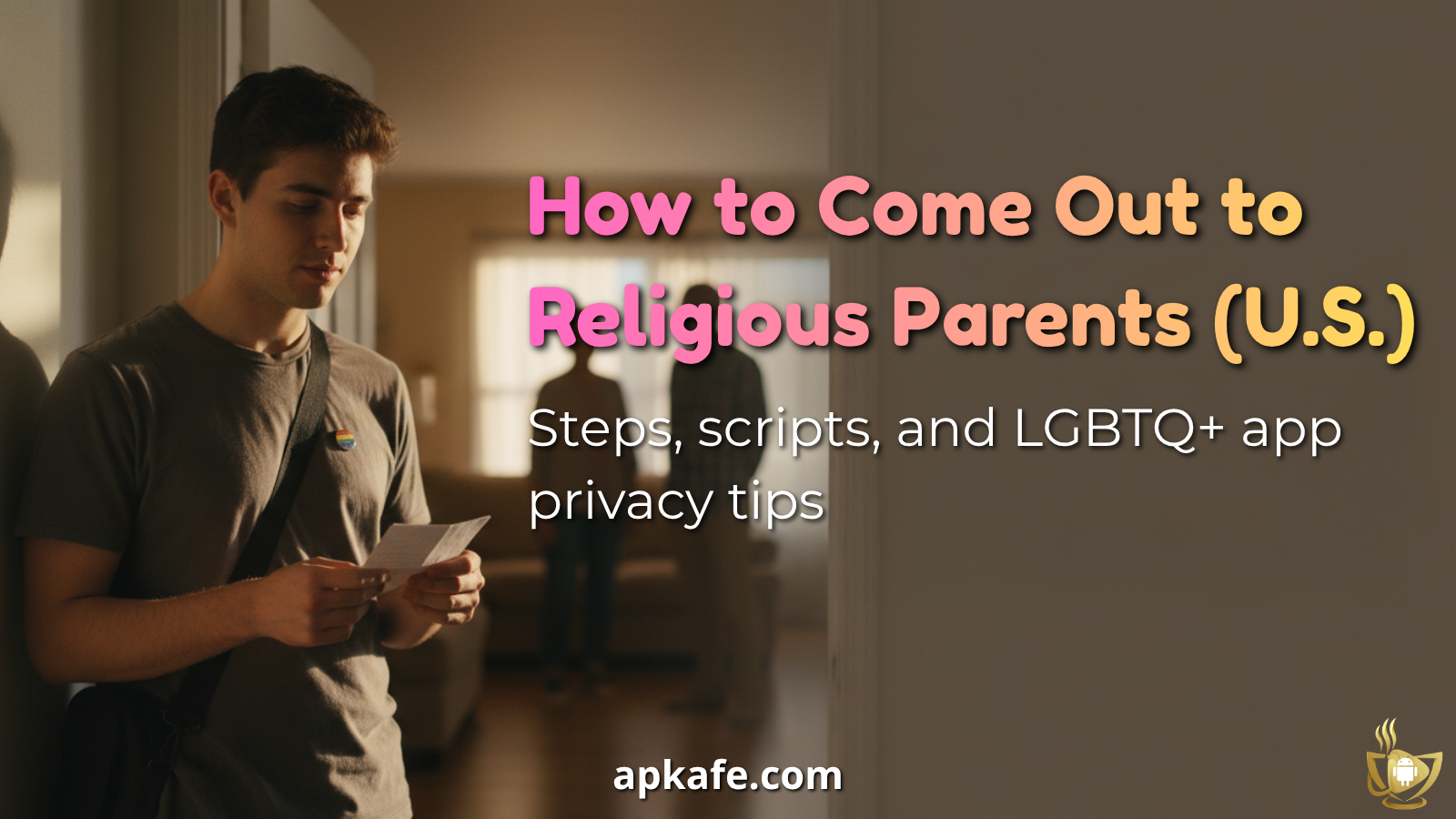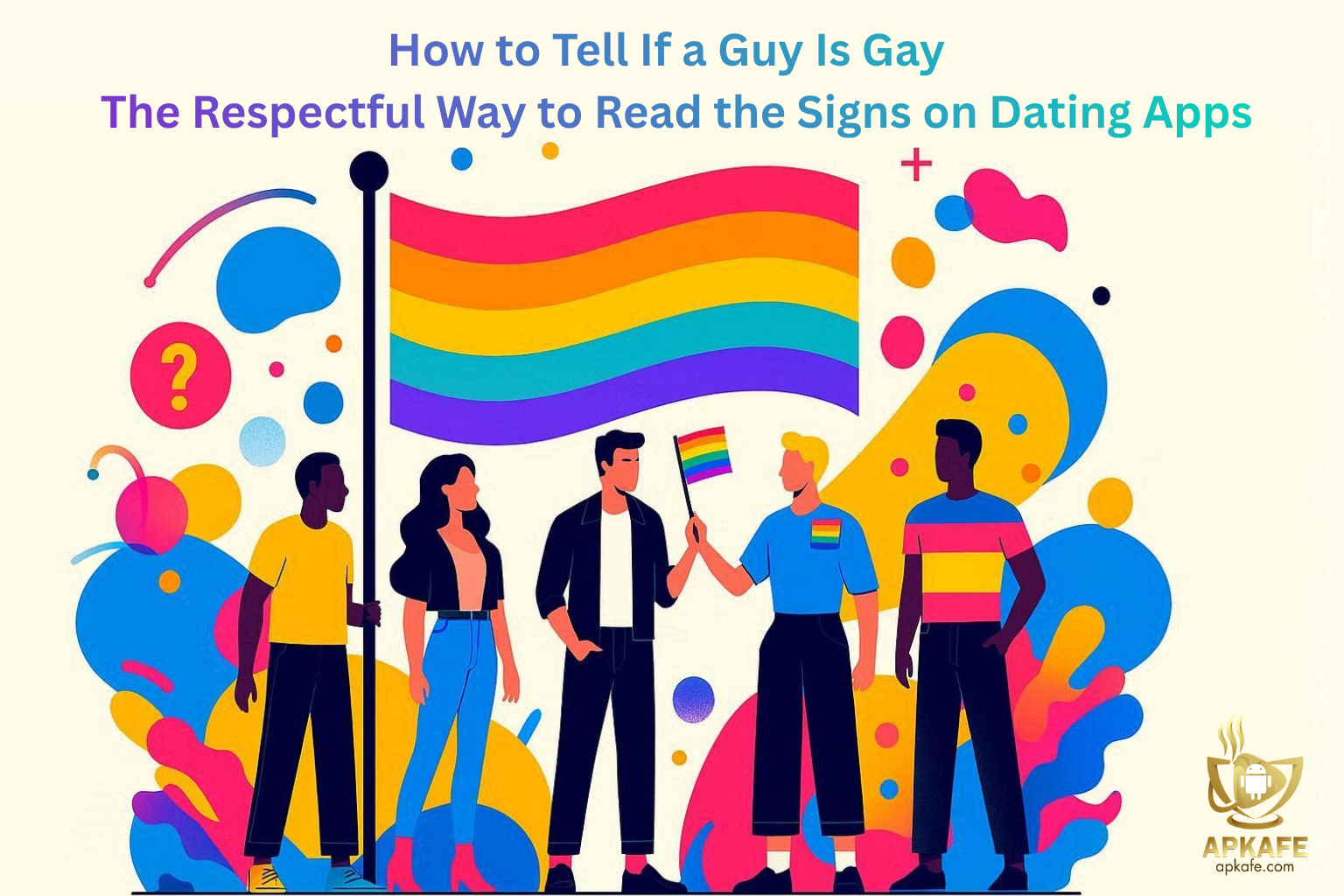🏳️🌈 How to Tell If a Guy Is Gay — The Respectful Way to Read the Signs on Dating Apps
You open a dating app, swipe through profiles, and notice a guy whose vibe feels a little uncertain. He’s friendly, funny, maybe flirty — but you can’t tell if he’s into you or just being nice. If you’ve ever found yourself wondering, “Is he gay, or am I reading too much into this?” — you’re not alone.
Understanding someone’s orientation online is tricky — especially in a world where online dating apps are shaping how people connect today.
Apps blur the lines between friendliness and flirting, and guessing wrong can lead to awkward moments or worse — unintentional disrespect.
This guide will help you recognize genuine gay interest safely and empathetically, without assumptions or stereotypes.
By the end, you’ll know how to read cues, start respectful conversations, and protect both your privacy and his.
❓ Have you ever wondered if someone’s interest is genuine or just friendly?
Keep reading — the next part will help you recognize signs most people completely miss.
Friendly cartoon of two people talking with LGBT pride flag background — inclusive and respectful tone.
Step 1 — Observe Communication Patterns on Apps
Sometimes, how he texts reveals more than what he says.
Before you assume anything, notice how patterns reveal more than words ever could.
Online conversation reveals subtle layers of attraction — something often discussed in what gay guys look for in a partner and how to show it on dating apps.
Someone who’s genuinely interested tends to show consistency and curiosity rather than randomness.
Key patterns to notice:
- Consistency in replies — Frequent check-ins, not just sporadic responses.
- Personal curiosity — Asking about your hobbies, weekend, or family.
- Playful tone — Light teasing or friendly emojis that invite engagement.
The next few lines might change how you interpret every text you get.
Compare it this way:
| Behavior | Friendly | Possibly Flirty |
|---|---|---|
| Reply time | Irregular | Predictable, attentive |
| Language | Neutral | Playful or emotionally open |
| Emoji use | 👍 😅 | 😊 😍 🔥 💖 |
But what if he’s just naturally friendly?
Example:
Jake, 28, from Portland, recalls:
“He always messaged first and asked real questions. After a week of chatting, he started sending good-morning texts. It felt intentional — not random.”
Jake later admitted that what really confirmed the vibe wasn’t the emojis or even the good-morning texts — it was consistency mixed with care.
“He’d remember small details — like asking if my dog’s paw had healed after I mentioned it once. That’s when I realized he was paying attention, not just chatting out of boredom.”
It’s often these subtle memory cues that indicate genuine interest.
When someone recalls specifics, it means they’re engaged — emotionally and intentionally.
That kind of pattern suggests interest.
Yet, one message alone means little — context is everything.
Pitfall: Overanalyzing every emoji or delay.
Pro Tip: Watch long-term engagement, not single gestures.
Patterns tell the story; isolated moments confuse it.
Step 2 — Notice Profile Language and Intent Cues
Profiles are quiet conversations — they reveal more than a bio line.
You’ll be surprised how much orientation can be communicated without a single word.
Today’s dating apps give users tools to communicate orientation indirectly yet clearly — especially those designed for the community, like the ones in top dating apps for gay men in the U.S.. Research from Pew (2024) found that over 65% of LGBTQ+ users rely on app intent fields to define who they’re open to dating.
Clues worth noting:
- Pronoun visibility: “he/him,” “they/them” — a subtle sign of inclusivity.
- Interest filters: “men seeking men,” “open-minded,” “all genders welcome.”
- Bio tone: Mention of equality, humor about dating culture, or involvement in LGBTQ+ causes.
Think you already know how to read a profile? The next examples might make you rethink that.
Example:
“Here for good coffee, better conversations, and kind people.”
Paired with inclusive filters, that bio quietly signals orientation without saying it outright.
Think of a dating profile as a digital first impression — part introduction, part boundary.
How someone uses that space reveals what they’re comfortable sharing and what they protect.
On apps like OkCupid or Hinge, inclusivity is no longer hidden; users can choose multiple identity and orientation labels.
Yet, many still prefer subtlety — a small rainbow emoji, a quote about kindness, or a playlist filled with queer artists.
These are quiet but intentional choices that say: “I’m open, I’m safe, I belong here.”
When in doubt, pause and ask yourself:
“If this were my profile, what message would I want to send — and what would I want others to respect about it?”
That empathy-centered question shifts your mindset from guessing to understanding.
Are you observing, or assuming?
Avoid reading too deeply into appearances or lifestyle choices — orientation isn’t defined by haircut, voice, or clothing.
Pitfall: Confusing inclusivity for confirmation.
Pro Tip: Mirror the respect you notice — inclusivity should go both ways.
Once you’ve understood his profile tone, the next clue often comes in conversation.
Step 3 — Engage Naturally and Test the Energy
Chemistry isn’t proven through questions — it’s built through comfort.
If you’re uncertain, engage casually first. The rhythm of interaction reveals a lot.
Keep scrolling — you’ll learn how one simple text can change the tone of an entire conversation
Try playful but respectful conversation starters:
- “You seem fun — what’s your ideal first date?”
- “So… are you always this charming online?”
- “Your profile made me smile — is that intentional?”
These openers invite light flirting without forcing labels.
If he responds warmly or mirrors your tone, you’ve likely found mutual comfort.
If he deflects or stays neutral, that’s okay — it’s simply not romantic energy.
For instance, many men report that subtle humor works better than direct questions.
Imagine this short exchange:
You: “You’re pretty good at texting, you know.”
Him: “Only with people worth texting 😉.”
Real attraction isn’t about guessing — it’s about reading the rhythm.
Pitfall: Asking “Are you gay?” early on.
Pro Tip: Let connection build. Comfort will reveal intent organically.
But even as you test the vibe, remember that curiosity has boundaries.
Step 4 — Recognize Boundaries and Respect Privacy
Every chat has limits. Knowing them keeps both sides safe.
The next part is something most daters forget — and it’s what actually protects you.
Not everyone feels ready to share orientation publicly — and that’s where LGBTQ+ rights & dating safety become essential knowledge.
A 2023 GLAAD survey found that 20% of LGBTQ+ users worry about being outed through screenshots or chat leaks.
How to stay respectful:
- Don’t screenshot or share private messages.
- Avoid joking about someone’s orientation publicly.
- End chats politely if you sense discomfort.
One Reddit user shared how a leaked Grindr chat cost a friend his job.
Every person’s level of openness differs. Outing someone — even accidentally — can cause real harm.
A man named Leo shared his story online:
“A coworker once screenshotted my dating profile and sent it to others. I wasn’t out at work yet. I felt exposed, like I’d lost control over my own story.”
That single action changed his trust in online dating for years.
Boundaries aren’t barriers — they’re forms of emotional armor.
When you honor someone’s privacy, you tell them, “You’re safe to be real with me.”
Respect is invisible, but it’s always felt.
Pitfall: Keeping screenshots “just in case.”
Pro Tip: Delete unused chats — digital respect is real respect.
Respect protects both sides — and that includes your own safety.
Step 5 — Stay Safe: LGBTQ+ Privacy Checklist
Curiosity is fine; compromising safety isn’t.
If you only read one section of this article, make it this one.
Even the most respectful conversations can turn risky if privacy slips. Use this five-point safety checklist whenever meeting someone new from a dating app:
- Meet in public spaces — cafés, parks, or restaurants with staff and cameras.
- Tell a friend where you’re going and share your live location.
- Check app permissions — disable “Always On” location and photo access after use.
- Use verification tools (photo / video check) and report fake profiles.
- Trust your gut. If a situation feels off, leave immediately and block.
- Arrange your own transport. Don’t rely on someone you just met.
- Avoid sharing private data — home address, workplace, or passwords.
Even seasoned app users forget these basics, but they make all the difference.
Many LGBTQ+ users say safety doesn’t mean paranoia — it means predictability.
A 2024 dating safety report found that users who pre-plan check-ins and meet in public were 70% less likely to experience uncomfortable encounters.
Safety planning might not feel romantic, but it is empowering.
It allows both people to focus on genuine chemistry instead of caution.
Think of it as emotional insurance — protection that lets authenticity breathe.
These precautions protect both your identity and the other person’s comfort, especially within LGBTQ+ dating spaces where privacy can equal safety.
Pitfall: Assuming verified badges guarantee safety.
Pro Tip: Double-check that “report” and “block” buttons work before first meeting.
Boundaries don’t limit freedom; they enable confidence.
Step 6 — Common Pitfalls When Reading Gay Cues
Most people skim this part — but it’s where all the quiet mistakes happen.
Many people confuse observation with assumption. Here’s how to avoid that:
- Avoid stereotyping. Masculinity and femininity are not orientation indicators.
- Don’t equate silence with disinterest. Some people are private or cautious.
- Remember context. Flirtation can be situational, not identity-based.
- Respect consent. If he avoids personal questions, back off.
- Avoid gossip. Outing or speculating is invasive and unethical.
What’s the harm in assuming?
Because assumption replaces empathy with ego.
What you’ll read next could save you from a lot of awkward moments.
Quick Recovery Tip: If you misread someone’s orientation, a simple “Didn’t mean to assume” is enough to restore comfort.
FAQs — Navigating Gay Dating and Understanding Cues
- Can straight guys use Grindr without causing offense?
Technically yes, but Grindr is built for men who date men. If you’re there out of curiosity, be upfront — otherwise it feels intrusive. - What if I misread someone’s interest?
It happens to everyone. Keep your response polite, delete the thread if needed, and don’t share or mock. Respect restores comfort. - How can I ask about orientation respectfully?
Use empathy-first phrasing: “I don’t want to assume — how do you usually describe yourself?” Context and tone matter more than words. - Are there universal gay flirting cues?
Not universal — but shared humor, light compliments, and mutual curiosity are usually safe signals. Remember, consent > guessing. - Which apps are safest for LGBTQ+ dating in the U.S.?
Grindr and Scruff dominate for community connection; OkCupid and Hinge offer inclusive filters; Tinder now supports orientation and pronoun fields.
For extra guidance, check Best Dating Apps for Gay Men in the U.S. - What should I do if I feel unsafe during a chat or date?
End conversation, block/report inside the app, inform a trusted friend. Apps like OkCupid and Hinge have in-app safety resources. - How do I protect my identity on gay dating apps?
Avoid linking Instagram or real-name accounts. Use nickname initials until comfortable; verify photos only via app tools.
Let’s summarize what truly matters before you log in again.
Almost done — but the next section ties everything together.
Summary: From Guesswork to Understanding
Dating apps are reflections of modern identity.
They blur traditional boundaries — friendliness and attraction, humor and curiosity.
The key isn’t to “figure out” someone, but to create space for them to be honest — a mindset explored deeply in what gay guys look for in a partner and how to show it on dating apps.
| Step | Focus | Why It Matters |
|---|---|---|
| 1 | Communication patterns | Reveals intent through consistency |
| 2 | Profile language | Shows comfort level and inclusivity |
| 3 | Conversation flow | Builds mutual safety |
| 4 | Boundaries | Prevents harm or exposure |
| 5 | Safety checklist | Protects physical and digital wellbeing |
Instead of asking ‘Is he gay?’, what if you asked ‘Am I making him feel safe enough to be honest?’
That’s where connection begins — not with labels, but with trust.
Golden Insight — The Heart of Respectful Curiosity
You’ve come this far — let’s bring it all together in one clear takeaway.
According to The Trevor Project (2025), 84% of LGBTQ+ respondents said respectful curiosity made them feel safer sharing who they are.
That’s the essence of this guide:
Not detecting, not guessing — understanding.
If there’s one thing to remember from this entire guide, it’s this…
Golden Takeaway: Respect creates clarity faster than curiosity ever will.
When you replace “figuring out” with “listening,” you don’t just learn about others — you grow into someone safe to be honest with.
And that is the truest kind of attraction there is.
Conclusion — Connection Built on Respect
Attraction is natural, curiosity human, but dignity is universal.
Understanding whether a guy is gay shouldn’t be a guessing game or a confrontation — it’s about observing, listening, and respecting.
When you shift focus from “finding out” to connecting authentically, you create space for honesty to flow naturally.
If there’s one universal truth about dating — online or offline — it’s this:
The goal isn’t to label people; it’s to understand them.
When curiosity meets compassion, confusion fades.
Real attraction doesn’t come from perfect timing or clever messages — it comes from creating space for someone else’s truth to exist beside yours.
So before your next swipe, remember: you’re not decoding a mystery — you’re learning a human.
Remember: Safety = trust + boundaries + empathy.
And empathy is the foundation of every healthy relationship — online or off.
Dating Safety & Privacy Block
Meet first in public places; inform a friend about your plan; protect personal data; verify profiles within the app; manage app permissions carefully; use block/report tools on any suspicious behavior; trust your intuition — if something feels wrong, step away immediately.
Further Reading — Explore What Matters Next
Still curious about how to build safer, more authentic connections online?
These guides dive deeper into self-awareness, dating safety, and understanding the LGBTQ+ experience — each one adds a new layer of clarity to what you’ve just learned. 👇
- Coming out to religious parents
- What gay guys look for in a partner
- Best dating apps for gay men in the U.S.
- LGBTQ+ rights & dating safety
User Reviews

